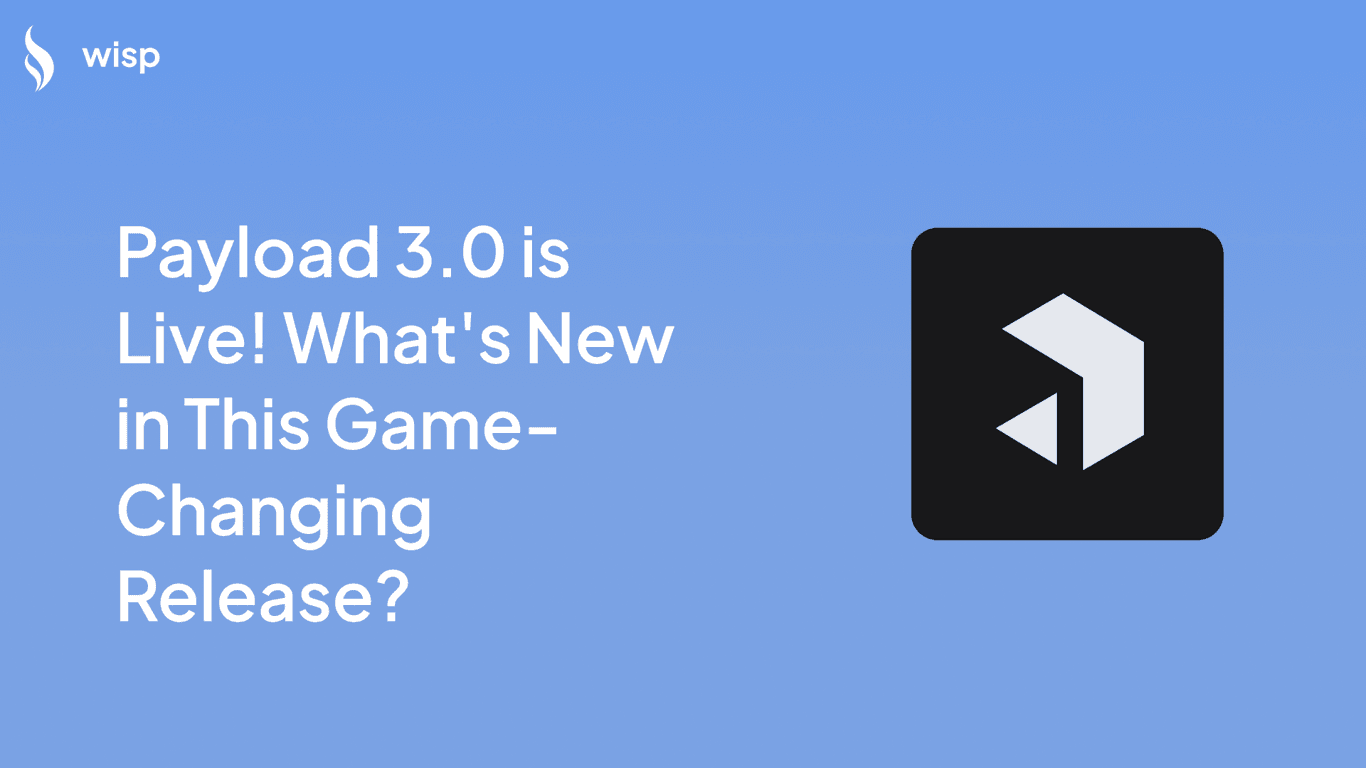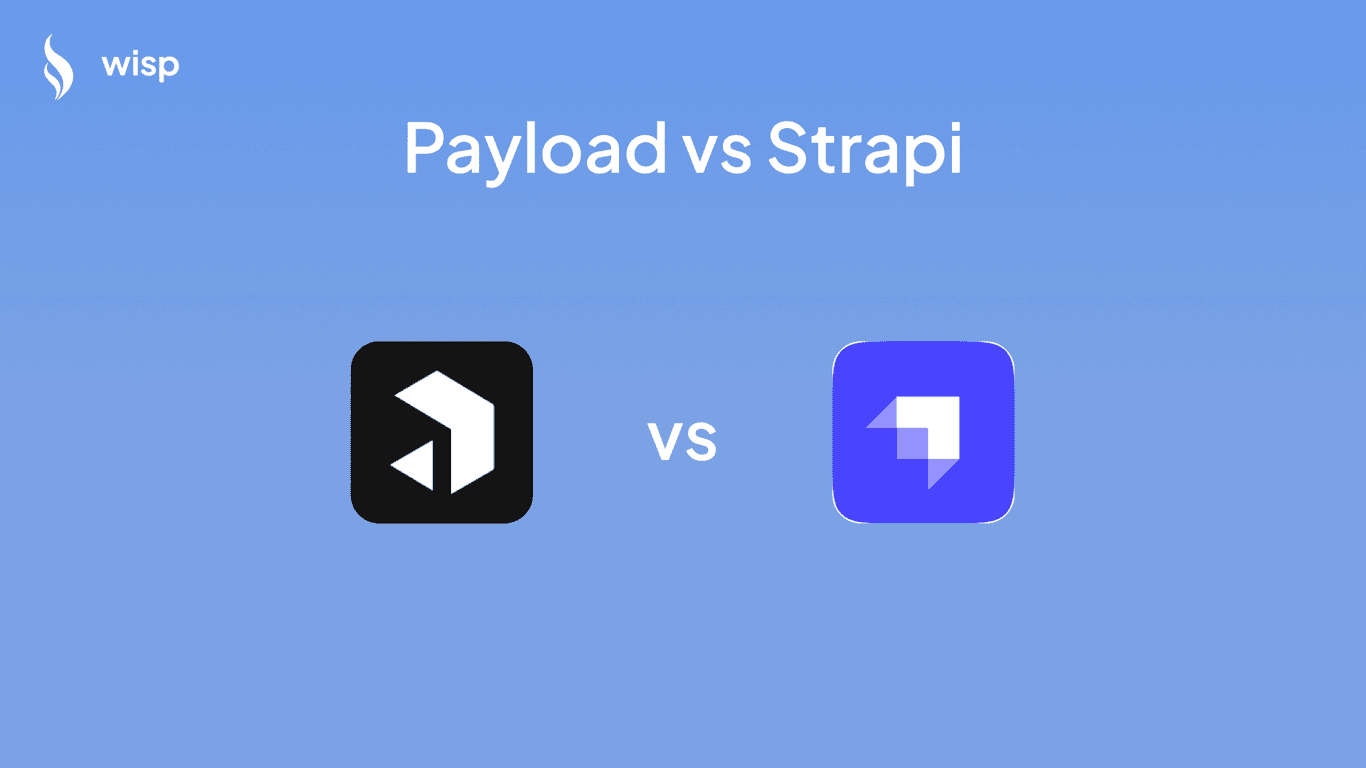
The excitement is palpable in the developer community with the release of Payload 3.0, the next-generation fullstack framework built on Next.js. You've heard about its powerful features and seamless integration capabilities, but like many developers, you might be wondering about the best way to get started, especially given its current beta status.
Whether you're a seasoned developer looking to upgrade from Payload v2 or a newcomer eager to dive into this modern framework, this comprehensive guide will walk you through everything you need to know to begin your journey with Payload 3.0.
What Makes Payload 3.0 Special?
Before we dive into the technical setup, let's understand what makes Payload stand out in the crowded landscape of content management systems and backend frameworks.
Payload 3.0 brings several game-changing features to the table:
Built-in Admin Panel: A fully functional, customizable admin interface built using React server and client components
Automatic Database Management: Seamless database schema management with built-in support for migrations and transactions
Instant APIs: Ready-to-use REST and GraphQL APIs that automatically align with your content structure
Custom Access Control: Comprehensive options for authentication and granular access controls
Advanced Media Management: Robust tools for file storage and image manipulation, including on-the-fly image cropping
Live Preview: Real-time content preview capabilities that show exactly how your content will appear
The framework has been gaining significant traction, with major organizations like Microsoft adopting it for their projects, as highlighted in their case study.
Getting Your Environment Ready
Before we start building with Payload 3.0, let's ensure your development environment meets all the necessary requirements:
Software Prerequisites
Node.js: Version 20.9.0 or higher is required
You can check your current version by running
node -vin your terminalIf needed, download the latest version from Node.js official website
Package Manager: While npm comes bundled with Node.js, we recommend using either:
pnpm (preferred for its efficiency)
Yarn
npm (with --legacy-peer-deps flag for compatibility)
Database: Payload 3.0 supports two primary databases:
MongoDB
PostgreSQL
Code Editor: Any modern code editor will work, but VS Code is recommended for its excellent TypeScript support
Installation Options
Let's explore the different ways to get started with Payload 3.0, depending on your project needs.
Option 1: Create a New Project
The quickest way to get started is using the create-payload-app command. Open your terminal and run:
npx create-payload-app@latest
This interactive command will guide you through the setup process. You'll be prompted to:
Choose a project name
Select a template (blank or website)
Pick your preferred database (MongoDB or PostgreSQL)
Choose additional features you'd like to include
For a more specific setup, you can use template flags:
# For a website setup
npx create-payload-app@latest -t website
# For a blank canvas
npx create-payload-app@latest -t blank
Option 2: Adding to an Existing Next.js Project
If you're integrating Payload into an existing Next.js application, follow these steps:
Install the core packages:
pnpm i payload @payloadcms/next @payloadcms/richtext-lexical sharp graphql
Install your preferred database adapter:
# For MongoDB
pnpm i @payloadcms/db-mongodb
# For PostgreSQL
pnpm i @payloadcms/db-postgres
Configure Next.js: Create or modify your
next.config.js:
import { withPayload } from '@payloadcms/next/withPayload'
export default withPayload(nextConfig)
Create the Payload configuration: Create a
payload.config.tsfile at your project root:
import { buildConfig } from 'payload/config'
import { mongooseAdapter } from '@payloadcms/db-mongodb'
import { slateEditor } from '@payloadcms/richtext-slate'
export default buildConfig({
collections: [],
admin: {
user: 'users',
},
editor: slateEditor({}),
db: mongooseAdapter({
url: process.env.DATABASE_URI
}),
})
Set up environment variables: Create a
.envfile:
PAYLOAD_SECRET=your-secret-key-here
DATABASE_URI=your-database-connection-string
Addressing Common Concerns
As you begin your journey with Payload 3.0, you might have some concerns about its beta status and stability. Let's address these head-on:
Beta Status and Stability
Many developers have expressed concerns about using beta software in production. Here's what you should know:
Version Locking: To ensure stability, specify exact versions in your
package.json:
{
"dependencies": {
"payload": "3.0.0-beta.17",
"@payloadcms/next": "0.0.1-beta.2"
}
}
Community Support: The Payload CMS Discord community is highly active and responsive. The core team regularly addresses issues and provides support.
Regular Updates: The beta version receives frequent updates and bug fixes, often within days of reported issues.
Transitioning from v2 to v3
If you're currently using Payload v2, you might be wondering about the transition. Here's why starting with v3 makes sense:
Future-Proofing: Starting with v3 now means avoiding a potentially complex migration later.
Modern Architecture: v3's integration with Next.js App Router and React Server Components represents the future of web development.
Enhanced Features: v3 brings significant improvements in areas like:
Database support (including PostgreSQL)
Admin UI customization
Performance optimizations
TypeScript support
Learning Resources
To help you get up to speed quickly, here are some valuable resources:
Official Documentation and Tutorials
Official Payload Documentation: Comprehensive guides and API references
Video Tutorials:
Community Resources
Discord Community: Join the Payload Discord for:
Real-time help from the community
Direct access to the core team
Announcements about updates and features
GitHub Discussions: Follow the Payload GitHub repository for:
Issue tracking
Feature requests
Code examples
Best Practices and Tips
As you begin developing with Payload 3.0, here are some best practices to ensure success:
Development Workflow
Start Small
Begin with a simple collection
Gradually add complexity as you become comfortable
Use the built-in admin UI to understand how collections work
Version Control
Commit your configuration changes frequently
Use meaningful commit messages for tracking changes
Keep environment variables separate from your codebase
Testing
Write tests for your access control logic
Test your API endpoints thoroughly
Verify your database migrations work as expected
Performance Optimization
Database Indexing
Create appropriate indexes for frequently queried fields
Use the built-in indexing features in your collection configs
Monitor query performance in your database
Asset Management
Implement proper image sizing strategies
Use the built-in image transformation features
Consider implementing a CDN for media delivery
Looking Ahead
Payload 3.0 represents a significant step forward in the evolution of content management systems and backend frameworks. While it's currently in beta, the robust feature set and active development make it a compelling choice for modern web applications.
The framework's integration with Next.js, combined with its powerful built-in features, positions it as a strong contender for projects ranging from simple content management to complex enterprise applications.
When to Choose Payload 3.0
Payload 3.0 is particularly well-suited for:
Content-Heavy Applications
Editorial websites
Documentation platforms
Digital magazines
E-commerce Solutions
Product catalogs
Custom shopping experiences
Digital marketplaces
Enterprise Tools
Internal dashboards
Data management systems
Custom admin interfaces
The future of Payload looks promising, with regular updates and an engaged community contributing to its growth. By starting your journey with Payload 3.0 now, you're positioning yourself at the forefront of modern web development.
Remember, while the beta status might seem daunting, the benefits of using a cutting-edge framework built on solid principles often outweigh the temporary challenges of working with pre-release software. The key is to stay connected with the community, keep your dependencies properly versioned, and contribute to the ecosystem when possible.
Start building with Payload 3.0 today, and join the growing community of developers who are shaping the future of content management and application development.



